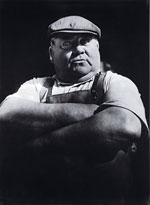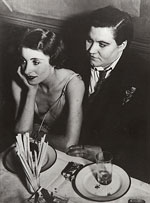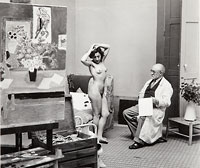Eye on Brassaï
An upcoming auction features three prints by the Hungarian-born photographer, and we take a closer look By Rebecca Rego Barry Rebecca Rego Barry is the editor of this magazine.
Brassaï (1899-1984) was born Gyula Halász in Brasso, Transylvania, Hungary (now Romania). He emigrated to Paris in the mid 1920s and changed his name to Brassaï, which means “from Brasso.” Brassaï, who went to Paris to be a painter and sculptor, was very much a part of the French intellectual scene of the time. He worked with André Kertész and Henri Cartier-Bresson, and he took portraits of Picasso, Dalí, Sartre, and Simone de Beauvoir. He was friendly with Henry Miller, who called him the “eye of Paris.” The two even produced a book together with Miller’s words and Brassaï’s images titled Quiet Days in Clichy, published by the Olympia Press in 1956 (a copy of which sold for $780 at PBA Galleries last fall.)
Beginning with photojournalism, Brassaï honed his photography skills until it became his prime medium in the late 1920s and early 1930s. In addition to his photographs of French artists and intellectuals, Brassaï became known for his street scenes—taken at markets, bars, even brothels—that captured the grittier side of the city. By this time, many photographers in his milieu had begun to use the new 35-mm handheld Leicas that took ‘action’ shots. Brassaï reportedly continued to use his Voigtlander Bergheil, a camera that used small glass plates instead of film, which requires a long exposure time. Which is to say Brassaï’s subjects were complicit in his dark depictions of Paris nightlife. In 1933, he published his first photobook, Paris de Nuit, subsequently named one of “the best produced and influential photobooks ever.” Last year, a first edition at Christie’s London sold for £2,125 (just over $3,000).
At Doyle New York’s upcoming auction on April 20, three Brassaï prints will be on the block. Each gelatin silver print, signed by Brassaï and numbered, comes from the estate of Ben Sonnenberg, founding publisher of the literary magazine, Grand Street. Sonnenberg had a modest collection of prints that included André Kertész’s Satiric Dancer (estimated at $4,000-6,000), Rudy Burckhardt’s lovely image of the Flatiron Building reflected in water (estimated at $2,000-3,000), and works by Japanese photographer Daido Moriyama. By chance, the three Brassaï prints Sonnenberg collected represent each of his three main areas of Brassaï’s photographic subjects: everyday street life, the Paris underworld, artists and intellectuals.
Of course Brassaï is not new to the auction block. After he died in 1984, most of his prints and drawings were left to his widow. A year after her death in 2005, the French auction house Millon & Associés sold her estate—550 photographs, 190 drawings, and 12 small sculptures. According to one report, the sale netted $6.5 million.
To read more about Doyle’s April auction and its offerings, see our On the Block column in the spring 2011 issue of Fine Books & Collections.











